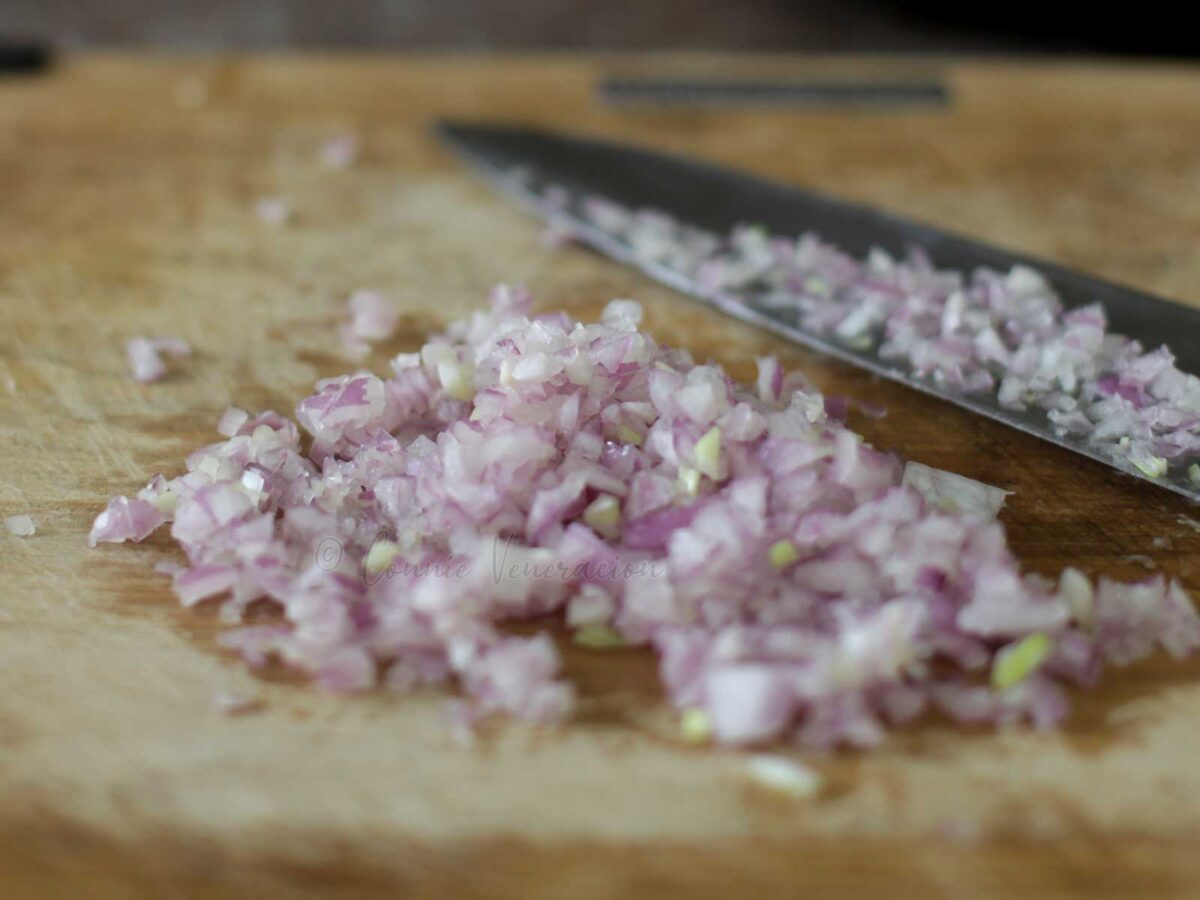When one or more ingredient in a recipe says “chopped”, it is presumed that it means cutting the ingredient or ingredients into small pieces. But how small?
The truth is, there are several stages in chopping. Whether something ought to be chopped, roughly chopped or finely chopped is not something borne out of arbitrariness or whim. Rather, it is determined by how the chopped ingredient is intended to be used.
So, let’s illustrate chopping. For purposes of this tutorial, I used an onion.

Let’s start with “rough chop” shown in the photo above. The pieces are definitely smaller than a whole onion, the pieces are definitely small enough to fit into the mouth but they are large enough to be picked up with a fork.

When sautéing or making a base for a sauce, a regular chop, shown above, is best. The pieces are small enough to soften in oil within a few minutes and still retain their shape, and not small enough to burn or liquefy in a very short time.

When chopping ingredients to mix with other chopped, minced or ground ingredients, finely chopping is ideal.
To wrap up this post, please don’t expect that there will be a separate tutorial for chopping tomatoes or mushrooms or what have you. Chopping is a process and it’s the same process whether you’re dealing with tomatoes or mushrooms or whatever ingredient needs to be chopped.



